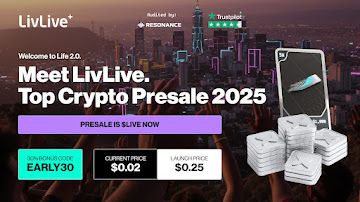Top 5 AI Tokens to Buy Now—Why Ozak AI Ranks Above the Rest for Profitability and Investor Hype
Ozak AI’s presale has quickly become one of the hottest AI token launches of 2025. The journey began at just $0.001 in Stage 1, then climbed through $0.002 in Stage 2, $0.003 in Stage 3, $0.005 in Stage 4, and $0.01 in Stage 5. It now sits at Stage 6 with a price of $0.012, meaning early investors from Stage 1 are already up over 1,100% in gains.
Up to date, Ozak AI has sold over 914 million tokens, raising more than $3.3 million in funding. The project has a total supply of 10 billion tokens, with 30% allocated to presale and another 30% reserved for the ecosystem and community, ensuring strong engagement and liquidity. The $OZ token has already surged by 1,100%, and with a projected public listing at $1, early investors could see gains of over 20,000% if these targets are achieved.
Market Performance of ASI, IP, NEAR, and RENDER
Even though Ozak AI is top in profitability and hype to follow, there is a range of other AI tokens that attract interest for their usefulness and market power.
-
The Artificial Superintelligence Alliance (FET) is the unified token born from the merger of SingularityNET (AGIX), Fetch.ai (FET), and Ocean Protocol (OCEAN). This consolidation brings together leading decentralized AI projects into a single ecosystem, creating one of the most ambitious alliances in the crypto and AI space.
FET is trading at approximately $0.6475, with a market capitalization around $1.53 billion. The token has experienced a slight decline of 0.39% in the last 24 hours. This consolidation aims to streamline the ecosystem, offering a single asset for investors and participants in the decentralized AI space.
-
Story Protocol (IP) is a decentralized platform enabling users to create and share interactive narratives. As of September 21, 2025, the IP token is trading at approximately $12.40, reflecting a 16.45% increase over the past 24 hours. The market capitalization stands at around $3.92 billion with a circulating supply of approximately 312.66 million IP tokens.
-
NEAR Protocol (NEAR) is a scalable blockchain platform designed for decentralized applications. Currently, NEAR is priced at $3.12, experiencing a 0.13% rise in the last 24 hours. The protocol's market cap is approximately $3.89 billion with a circulating supply of about 1.25 billion NEAR tokens.
-
Render Network (RENDER) is a decentralized platform that taps into idle GPU resources to provide cost-efficient 3D rendering for creators and studios. By allowing GPU owners to monetize their unused processing power, the network significantly reduces rendering costs compared to traditional cloud solutions.
The platform has been widely adopted in the creative industry though it still faces some challenges with scaling and higher infrastructure costs as demand grows. Right now, RENDER is trading around $4.00, with a 24-hour range of $3.91 to $4.02, showing steady performance in the market.
These four tokens are still competitive; the yields of the Ozak AI presale and aggressive expansion are set to be ahead of its competitors in terms of investor sentiment.
Ozak AI: Leveraging AI and DePIN and Strategic Partnerships
Ozak AI is more than just a presale token; it’s an AI-powered service that combines artificial intelligence with DePIN, the Decentralized Physical Infrastructure Network. The platform operates through a network of Prediction Agents (PAs) and the Ozak Stream Network (OSN), along with EigenLayer AVS, Arbitrum Orbit integration, Ozak Data Vaults, real-time data analysis, and automated smart contract execution. Security is a priority, with CertiK audits and in-house smart contract verification giving investors confidence.
To build a strong ecosystem and stick to its roadmap, Ozak AI has formed strategic alliances with Hive Intel, which provides AI-driven market intelligence; SINT, which develops AI-based trading solutions; and Weblume, which focuses on AI data infrastructure. Its DePIN design ensures scalability through decentralized infrastructure, and cross-chain functionality allows the system to expand to other blockchain ecosystems smoothly.
Conclusion
The hype around AI tokens highlights the potential of the sector, but Ozak AI is clearly more profitable and utility-driven than the alternatives. In Stage 1, early adopters paid only $0.001, which has already given them expected gains of over 1,100% by Stage 6. With more than $3.3 million raised, strong partnerships, and an ambitious AI and DePIN ecosystem, Ozak AI represents real innovation and opportunity. While other AI tokens like ASI, IP, RENDER, and OCNEAR are strong competitors, Ozak AI’s momentum and clearly defined roadmap make it a top choice for investors seeking high growth in 2025.
For more information about Ozak AI, visit the links below:
Website: https://ozak.ai/
Twitter/X: https://x.com/OzakAGI
Telegram: https://t.me/OzakAGI
Disclaimer: This is a sponsored article and is for informational purposes only. It does not reflect the views of Crypto Daily, nor is it intended to be used as legal, tax, investment, or financial advice.
You May Also Like

Why Bitcoin Loses to Gold in 2025

Here’s Why Community Members Leaving Pepe Coin Are Rushing Into LivLive ($LIVE) This Week
